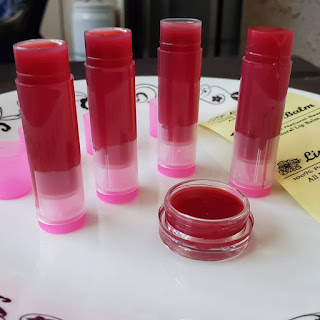Melt and pour hand made soaps
Soap making is one of the fun, creative and frugal DIY activity. There are two types of soap making process.
1. Melt and Pour - easy for beginners. As the name indicates, you just melt a soap base and customize with colors or dried flowers.
2. Cold process soap - This is the actual process where saponification takes place. It is the chemical reaction in which oils and fats react with lye to form soap.
Sharing here three basic soap melt and pour recipes.
Basic soap making procedure
Ingredients:
Procedure:
1. Melt and Pour - easy for beginners. As the name indicates, you just melt a soap base and customize with colors or dried flowers.
2. Cold process soap - This is the actual process where saponification takes place. It is the chemical reaction in which oils and fats react with lye to form soap.
Sharing here three basic soap melt and pour recipes.
Basic soap making procedure
Ingredients:
- 8 oz. Goat Milk Melt and pour soap base (2 soaps of 4 oz)
- 99% Isopropyl alcohol
- Few drops of Essential oil
Procedure:
1. Chop the melt and pour soap base into small pieces and melt the base in microwave using 30 second bursts. Stir between each burst to melt evenly.
2. Add essential oils and stir.
3. Spritz the base of the soap mold with alcohol and carefully pour the heated base. Spritz the top with alcohol to prevent any bubbles.
4.Once the soap is poured into the mold, the mold shouldn't be moved to avoid breaking .Allow the soap to harden for at least 4 hours or up to overnight.
5. Wrap the soap in plastic wrap to prevent glycerin dew.
Voila, beautiful hand made soaps are ready.
Notes:
1. In case of adding any dried flowers/beads, check the temperature of the base. If it is above 130 degrees F, dried flowers/exfoliators like poppy seeds, sesame seeds or golden beads may fall to the bottom of the mold during pouring.
2. In case of adding any colors, disperse them in Isopropyl alcohol to prevent any clumps and then add the dispersed mixture to the melted soap base.
Calendula soap:
Calendula flowers are added in the soap base. During winter, I collect the calendula flowers from home garden, sun dry the flowers and use them for my DIY products. I used Frankincense essential oil.
Turmeric soap:
As a natural colorant, I added 1/2 tsp of turmeric powder to alcohol and combined with the soap base. Essential oil used is orange.
Rosehip Soap:
For the rosehip soap, I used 1 tsp of rosehip powder and 2 tsps of rose clay. Rosehip powder is rich in Vitamin C and gives a hue of mustard yellow color. To achieve pink color, I added rose clay, double the quantity of rosehip powder. Dispersed both the powders separately in alcohol and mixed with the soap base. Gold bursting beads are added to the rose soap for exfoliation. They release moisturizing jojoba oil when applied onto the skin. Rose absolute is the essential oil used.
Where to Buy:
Melt and pour soap base from Brambleberry or Amazon
Soap molds from Amazon
Rosehip, rose clay, beads from Brambleberry.






Comments
Post a Comment